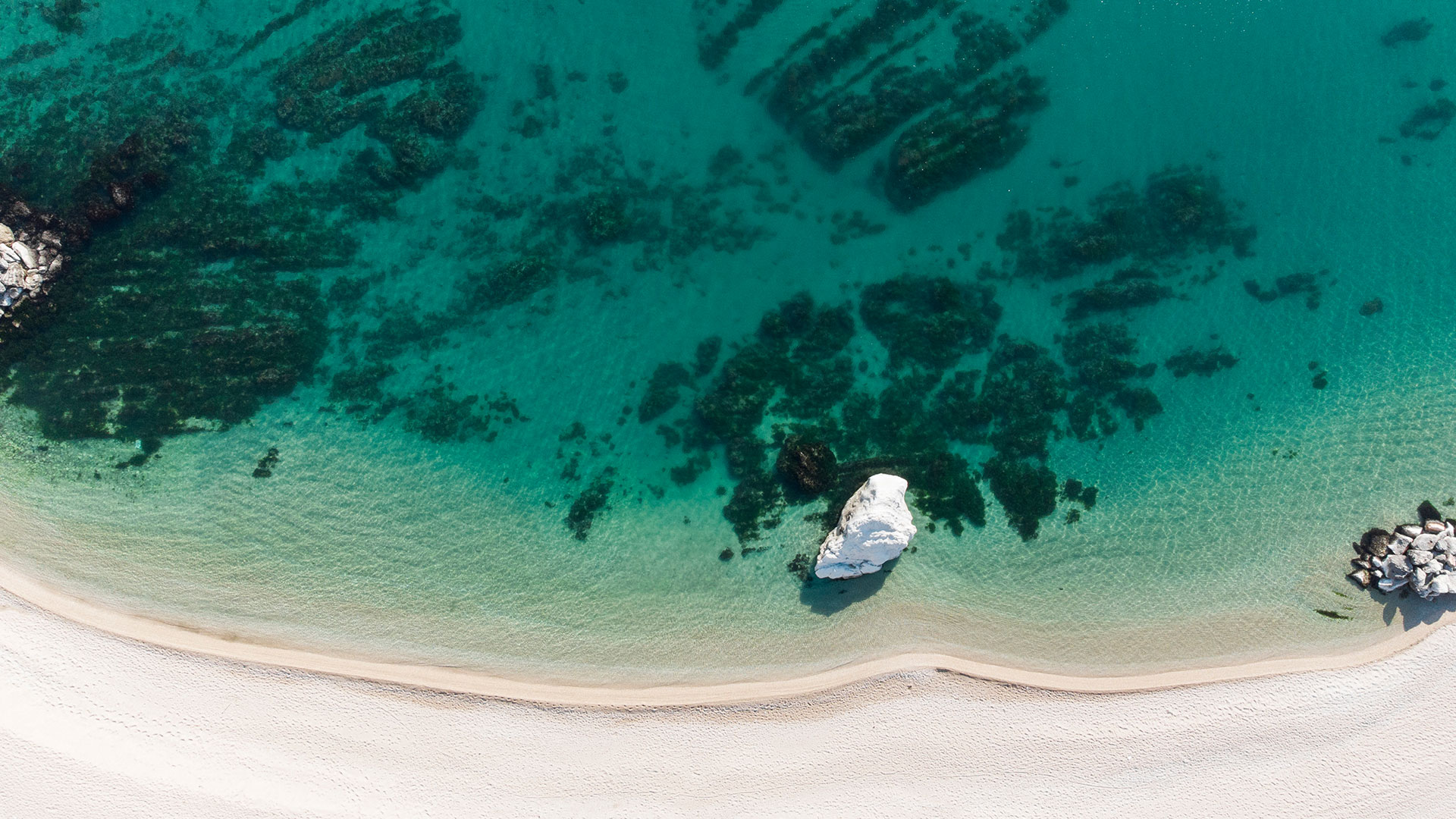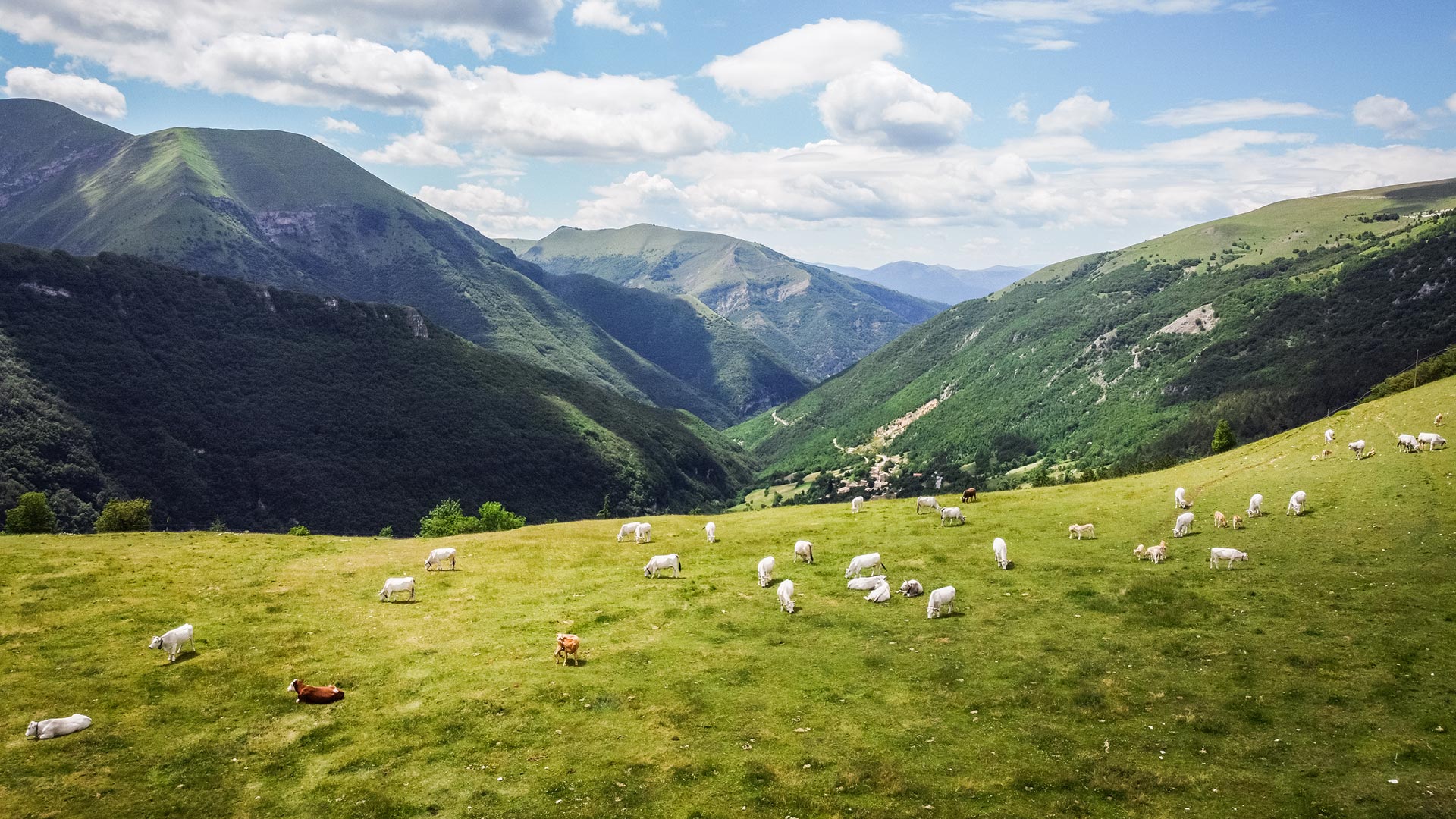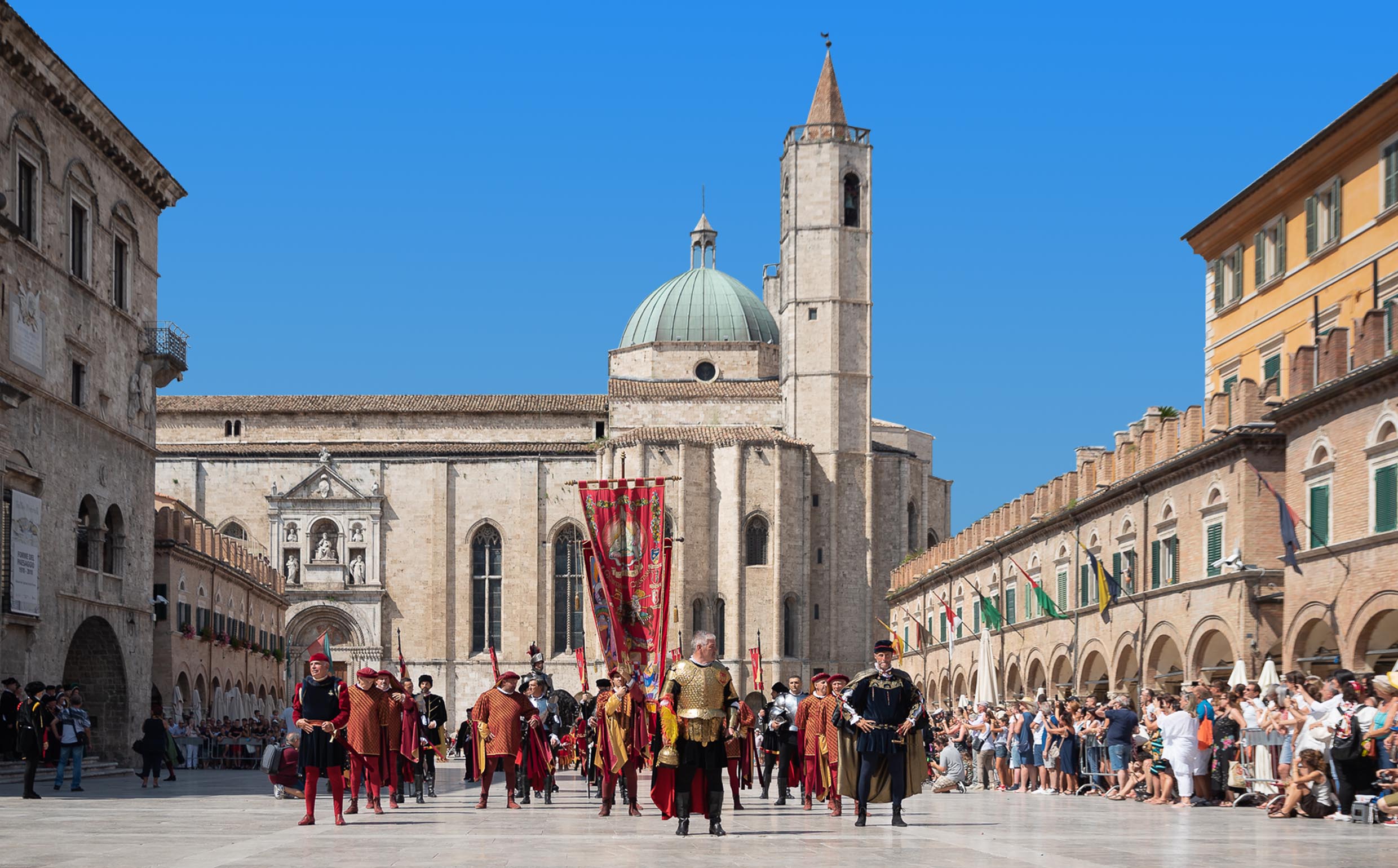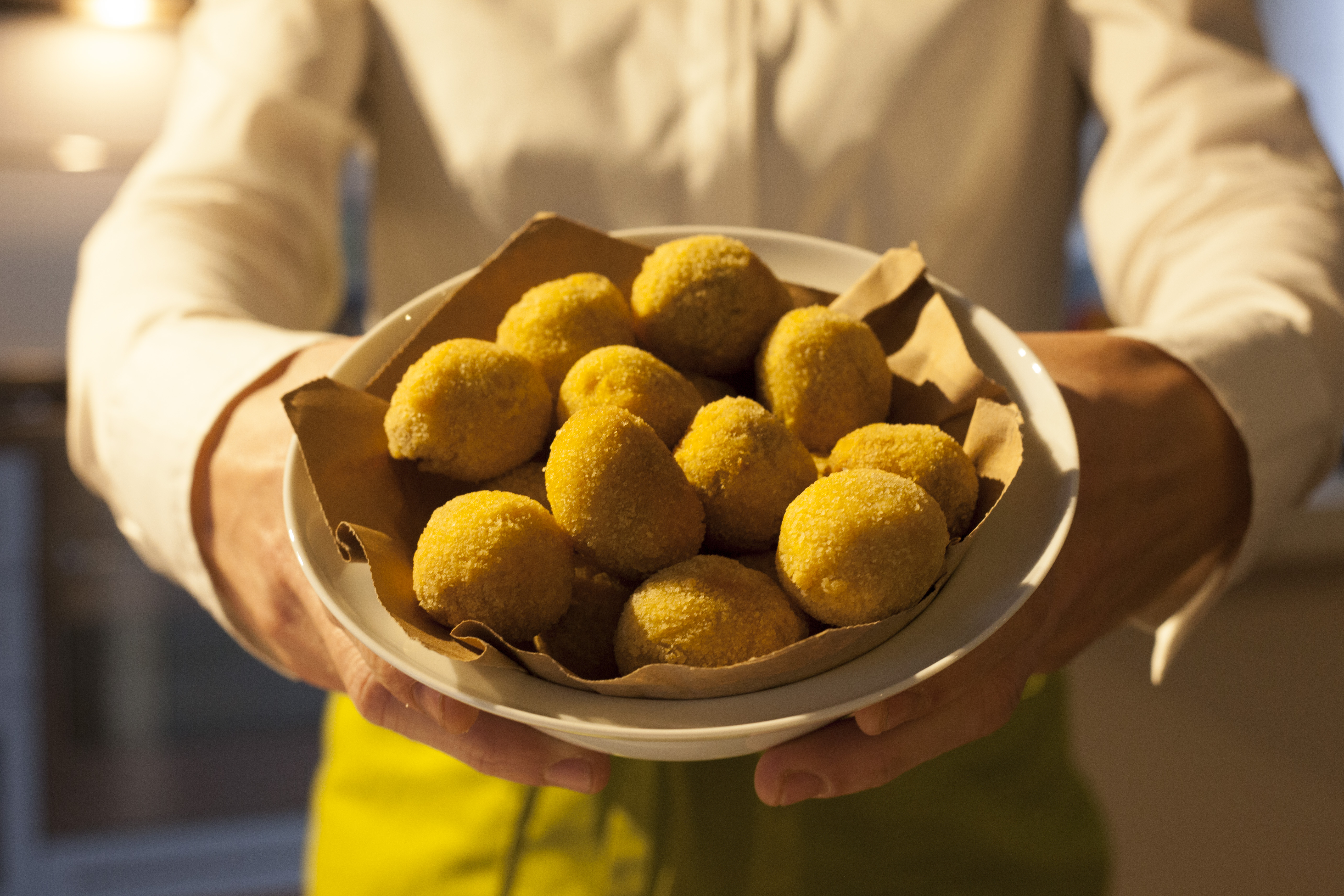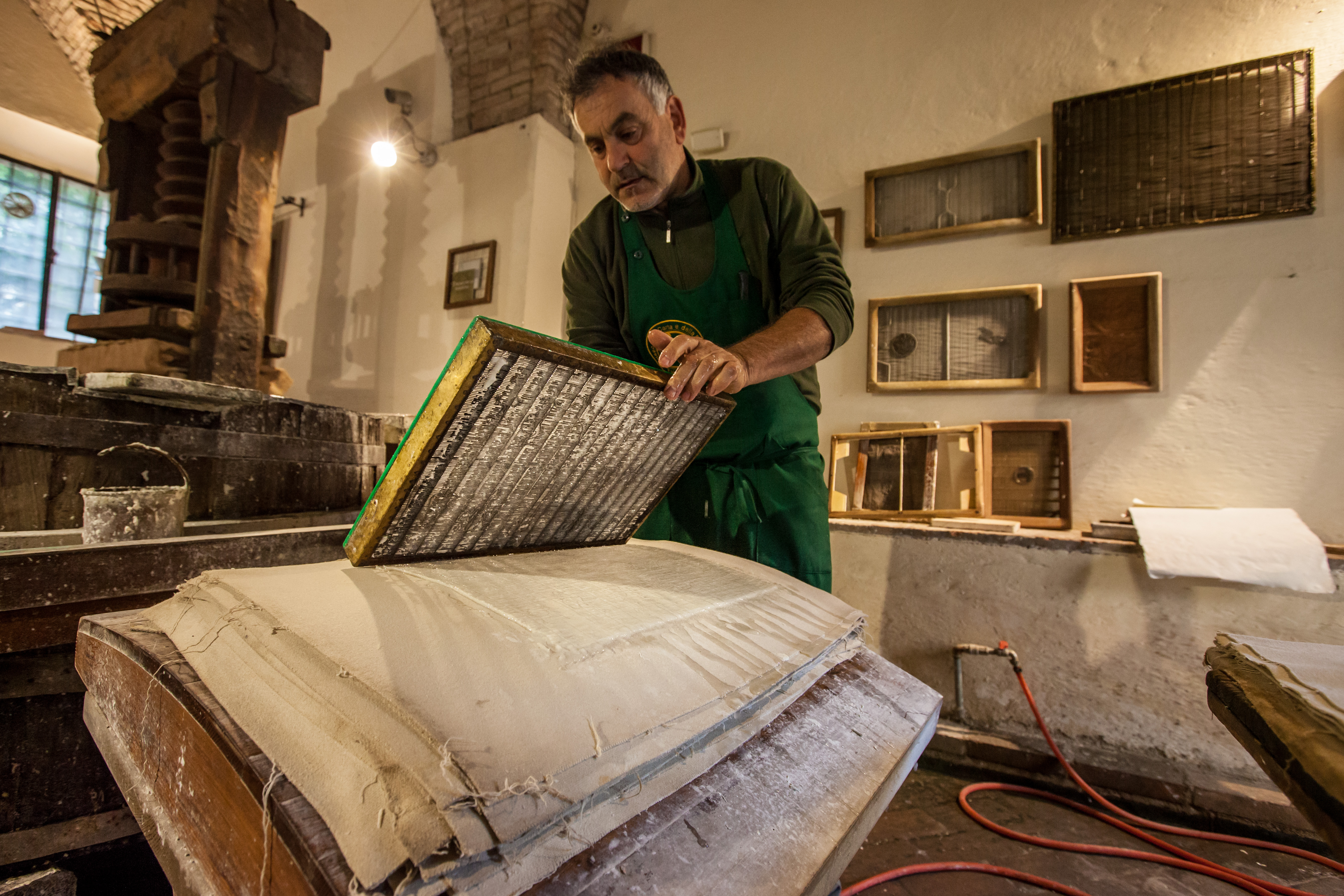Curiosities - Marche Tourism
The cultural heritage
Perhaps not everybody knows that in the Marche there are 500 piazzas in the centres of the historic towns and ancient villages; thousands of churches, including 200 Romanesque ones, 90 abbeys and important sanctuaries, 7 archaeological parks; 400 museums and art collections (the total number of municipalities is 225); 71 historical theatres; 180 km of coast with 26 resorts on the Adriatic Sea and a large number of famous people born in this region. Frederick II Hohenstaufen was born in Jesi on 26 December 1194. Between 1508 and 1516 Baldassare Castiglione wrote Il Cortegiano here, one of the most important Renaissance works, set at the court of the Duke of Urbino; Father Matteo Ricci, who spearheaded western culture in China, was born in Macerata on 6 October 1552. Three great opera singers and composers were born in the Marche: Giovanni Battista Pergolesi, (Jesi 1710–Pozzuoli 1736), Gaspare Spontini (Maiolati 1774–1851) and Gioachino Rossini (Pesaro 1792–Paris 1868). In addition to Giacomo Leopardi (1798–1837) born in Recanati, further famous artists were born in the Marche: Ugo Betti (1892–1953), the greatest Italian dramatist after Luigi Pirandello, was born in Camerino; the novelist Libero Bigiaretti (1906–1993) came from Matelica; the hometown of the writer Paolo Volponi (1924–1994) was Urbino; and Luigi Bartolini (1892–1963), a poet and, together with Giorgio Morandi, the greatest Italian engraver of the 20th century, was from Cupramontana. A number of leading contemporary poets come from the Marche: Eugenio De Signoribus, Umberto Piersanti, Gianni D’Elia, Guido Garufi and Franco Scataglini (1930–1994). A great literary heritage is kept in the region’s 315 libraries, some of them centuries old, such as the one at the monastery of Fonte Avellana in the province of Pesaro and Urbino, the Biblioteca Oliveriana in Pesaro and the library in Palazzo Leopardi in Recanati.
As regards the fine arts, in addition to the great masters of the past, such as Gentile da Fabriano, Bramante and Raphael, a number of outstanding 20th-century artists were born in the Marche: Scipione (1904–1933); Osvaldo Licini (1894–1958); Corrado Cagli (1910–1976); Edgardo Mannucci (1904–1986). The region is also the birthplace of such contemporary artists as Enzo Cucchi, Eliseo Mattiacci, Gino De Dominicis (1947–1998) and Giuseppe Uncini (1929–2008). The great tradition of Leonardo Castellani (1896–1984) and Francesco Carnevali at the Scuola del Libro in Urbino, where the art of restoring old books is taught, has been continued by Renato Bruscaglia (1921–1999) and Carlo Ceci and their pupil Walter Valentini. Many of the works of these modern artists are on display in Macerata in the Palazzo Ricci. Other modern art museums in the Marche include the Galleria G.B. Salvi in Sassoferrato, the Pinacoteca civica in Ancona, the Pinacoteca civica in Jesi and the Torrione (built by Francesco di Giorgio Martini) in Cagli. The Pinacoteca comunale in Ascoli Piceno contains an interesting collection of 19th-century paintings. Surprisingly, perhaps, the Marche is the region that possesses the highest number of Venetian paintings after Veneto, thanks to the polyptychs of Paolo Veneziano, Jacobello del Fiore and Carlo Crivelli, and the paintings by Giovanni Bellini, Lorenzo Lotto, Titian, Pasqualino Rossi and Giovan Battista Tiepolo. In Fermo there is also a painting by Rubens, the Adoration of the Shepherds, commissioned in 1601 by the Congregation of the Oratory of that town. The whole region is studded with oratories and churches built by this religious order, often in an exuberant baroque style. Numerous important battles were fought in the Marche: the battle of Sentinum (295 B.C.), when the Romans defeated the Gallic tribes called the Senones and started the occupation of the region; in 207 B.C. the Romans overcame the Carthaginians under the command of Hasdrubal in the battle of the Metauro. In 1860 Piedmontese general Cialdini defeated the papal troops in the battle of Castelfidardo (1860) – the town hosts the national monument of the Marche in honour to general Cialdini, remembering the battle that has set off the Unification of the Reign of Italy in 1861. One of the most magnificent Renaissance villas in Italy is to be found in the region: near Pesaro you can't miss Villa Imperiale, which was rebuilt and extended around 1530 by the architect, stage designer and painter Girolamo Genga . We must finally mention the Mole Vanvitelliana, designed by the architect Luigi Vanvitelli with a pentagonal plan (works began in 1733) and located in the port area of Ancona.




